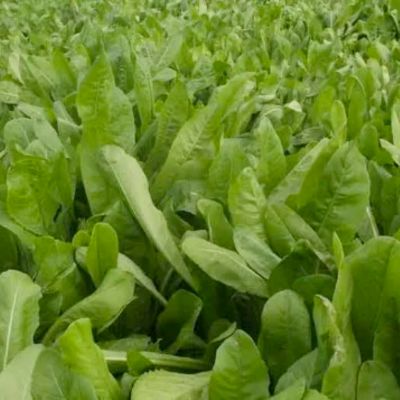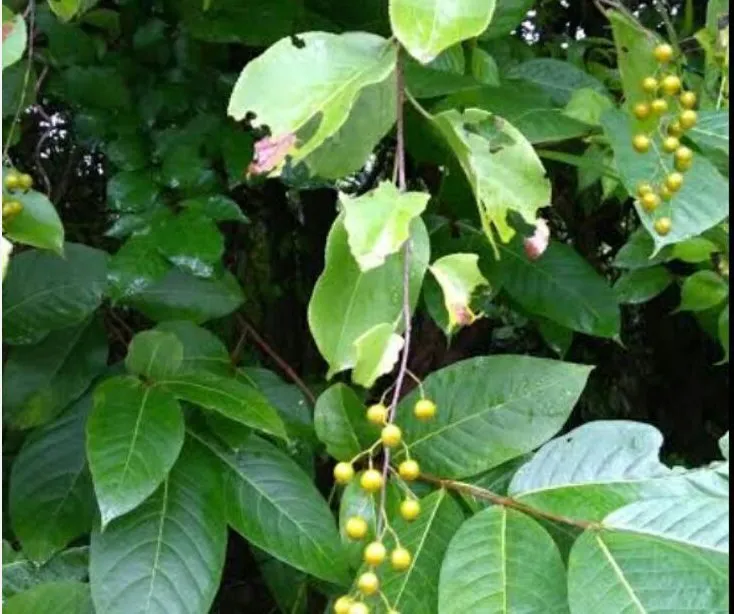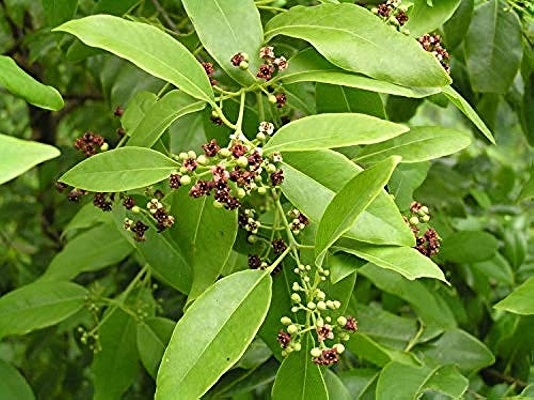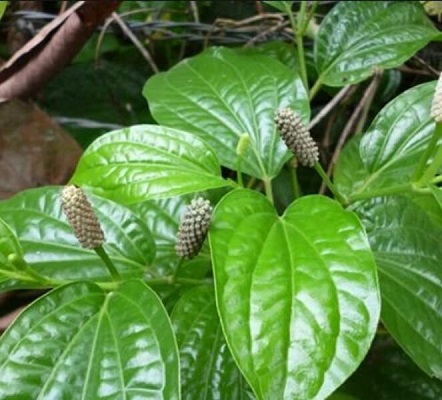On This Page
Jyotismati – Celastrus paniculata
Introduction
Jyotismati, commonly known as Staff tree is one of most commonly seen herb which is used for the treatment of various diseases. The name Jyotismati means that it is having white shining spots over the stem. The genus name Celastrus means it is a bushy evergreen shrub and species name paniculata means it is having panicle inflorescence. It can effectively be used in various diseases including skin diseases and allergic diseases over skin.
Dr.Gupta’s IAFA have been studying on readily available herbs for the purpose of alleviating allergic condition. Our experts studied on Jyotismati and proven the plant’s therapeutic activities like Intellect promoter, Appetizer, Antiallergic, Stimulant, Rubefacient, Emollient, Emetic, Digestive and Hypolipidemic actions etc. It can be used in various diseases like Leprosy, Ascitis, Skin disorders, Digestive disorders etc. Methanolic extract of seed of Jyotismati have hypolipidemic effect. Aqueous seed extract of Jyotismati shows intellect promoter actions. Methanolic extract of seeds of this plant have relaxing effect on intestine. So Jyotismati can effectively be used in different disease conditions.
Action of Jyotismati – Celastrus paniculatain Allergies
IAFA experts have successfully proven the antiallergic property of the plant Jyotismati. The plant contains phytoconstituents like tannin, celapangine, celapanine, celastin, celestrol, paniculatine, malakanguniol, malkangunin, beta amyrin, beta sitosterol etc. These phytoconstituents aids the antiallergic property of Jyotismati. It can be effectively applied on the skin in powder or oil form to alleviate skin allergic conditions.
Vernacular Names
| Sanskrit Name | ज्योतिष्मती, कटभी, ज्योतिष्का , कंपनी, पारावतपदी, पिण्या, लता, ककुन्दनी |
| Hindi Name | Malakangani |
| English Name | Staff tree |
| Malayalam Name | Palularam |
| Kannada Name | Kariganne |
| Marathi Name | Kangunni |
Botanical Name
Celastrus paniculata
Family
Celastraceae
Morphology of Jyotismati – Celastrus paniculata
- Large deciduous climber
- Stem reddish brown with whitish lenticels
- Leaves broadly elliptic or ovate
- Inflorescence is long panicle
- Flowers are green coloured
- Fruits are capsule
Ayurveda reference of Jyotismati – Celastrus paniculata

Geographical distribution of Jyotismati – Celastrus paniculata
Jyotismati grows throughout India, especially in hilly areas.
Phytoconstituents of Jyotismati – Celastrus paniculata
The plant contains phytoconstituents like tannin, celapangine, celapanine, celastin, celestrol, paniculatine, malakanguniol, malkangunin, beta amyrin, beta sitosterol etc.
Parts used of Jyotismati – Celastrus paniculata
- Seed
Dosage of Jyotismati – Celastrus paniculata
- Powder(churna)- 1-2 g
- Oil(taila) – 5-15 drops
Medicinal Properties of Jyotismati – Celastrus paniculata
- Budhi vardhaka – promote intellect
- Smriti vardhaka – promote memory
- Vamaka – induces vomiting
- Varnya – promote skin complexion
- Vranahara – useful in wound healing
- Dipana – carminative
- Pacana – digestant
- Swedajanya – induces sweating
- Nadi balya – stimulant

Have A Health Issue?
Consult Online
- Dr. Sahil Gupta (B.A.M.S., M.H.A.)
Ayurvedic Allergy Specialist
CEO & Founder of IAFA®
Home remedies of Jyotismati – Celastrus paniculata
Ayurveda is an ancient system of medicine popular in India. The treatment system adopted by Ayurveda is purely based on naturally available herbs. Jyotismati is one of the most widely sen and used herb. Due to its high medicinal value it is used in treating many diseases like,
- In White spotted leprosy (Sidhma) – Oil of Jyotismati is processed with water mixed with alkali of Achyranthes aspera and massaged over skin.
- In Ascitis (Udara) – Jyotismati oil is mixed with milk and Ferula foetida and taken.
- In Erysipelas (Visarpa) – Oil of Jyotismati is mixed applied over skin to cure wounds due to erysipelas.
- In Anaemia (Pandu) – Oil of Jyotismati is taken with milk to cure anaemia.
- In Wounds (Vrna) – The oil of Jyotismati is applied over wounds for early healing.
- As a Digestant (Pacana) – Powder of Jyotismati is taken with hot water after food.
- In Skin diseases (Kushta) – Oil of Jyotismati is mixed with alkali of Achyranthes aspera is applied over skin
- In indigestion (Ajirna) -Jyotismati is powdered and taken after food.
Ayurveda is an Indian system of medicine and a lifestyle modification practice which uses commonly seen herbs as medicine. Dr.Gupta’s IAFA have been conducting research studies to find out different phytoconstituents of herbs and their action in body. Such knowledge acquired by our experts are used in preparation of medicines and providing better treatment . IAFA is the provider of treatment for a wide range of diseases, mainly allergic diseases only based on Ayurveda.
Reach IAFA for safe herbal remedies for all your ailments!!!
Was this Page Helpful?
Read More Articles
-

Kasini (Cichorium intybus)
Kasini (Cichorium intybus) commonly known as Chicory is a perennial herb, with large…
-
-









